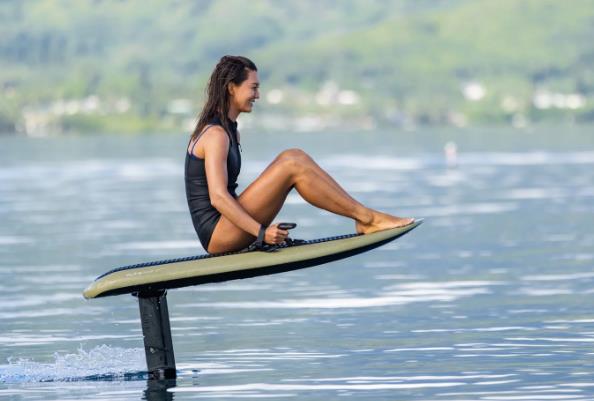How Does a Surf Board Ride Above Water?
The surf board that rides above water, commonly known as a hydrofoil board, represents a significant innovation in water sports, merging traditional surfing with modern technology to create an entirely new riding experience. This article explores the technology behind these boards, how they manage to 'fly' above the water, and what sets them apart from traditional surfboards.

The Science of Hydrofoil Surfing
Hydrofoil surfing utilizes a surfboard equipped with a hydrofoil that extends below the water's surface. As the board gains speed, the hydrofoil generates lift, raising the board above the surface and allowing it to glide through the water with minimal drag.
Key Components
- Hydrofoil: The hydrofoil consists of a mast and wings. The mast attaches to the bottom of the board and extends downward, ending in wings that sit below the water surface. As speed increases, water flows over these wings, creating lift.
- Board Construction: Boards designed for hydrofoil surfing are typically shorter and more robust than traditional surfboards. They must withstand the force of the lift and provide a stable platform for the rider.
- Power Source: Hydrofoil boards can be propelled by various power sources, including paddling, wave energy, wind (when used with a sail or kite), or an electric motor.
Advantages of Hydrofoil Surfing
Efficiency and Speed
The hydrofoil's design allows surfers to achieve greater speeds with less effort. The reduction in drag means riders can glide smoothly over water surfaces, including choppy conditions where traditional surfboards would struggle.
Versatility
Hydrofoil boards excel in a wide range of conditions, from flat, calm waters to open ocean swells. Their ability to ride above the surface allows surfers to explore areas that were previously inaccessible or unrideable.
Environmentally Friendly Options
Electric hydrofoil surfboards offer a clean, eco-friendly alternative to gasoline-powered watercraft. With electric motors that provide significant thrust without emissions, riders can enjoy a quiet, efficient ride.
Choosing the Right Hydrofoil Board
When selecting a hydrofoil board, several factors come into play:
- Board Size and Volume: Beginners should look for larger boards with more volume for stability. Experienced riders may prefer smaller, more agile boards.
- Foil Size and Shape: The size and shape of the hydrofoil affect lift and control. Larger wings provide more lift at lower speeds, suitable for beginners, while smaller wings offer higher speeds and agility for advanced riders.
- Electric Motor Specifications (if applicable): For electric hydrofoil boards, consider the motor's power, typically measured in watts. A more powerful motor can provide higher speeds and better performance in various conditions. Additionally, battery life is crucial; look for boards offering at least 1 to 2 hours of ride time on a single charge.
Maximizing Your Hydrofoil Experience
Safety Precautions
Always wear a helmet and impact vest, and consider using a leash to keep the board close if you fall. Hydrofoil blades can be sharp, so maintain a safe distance from others.
Learning Curve
Hydrofoil surfing has a steeper learning curve than traditional surfing. Beginners should start in flat, open water and consider taking lessons from a certified instructor.
Maintenance and Care
Regularly inspect and maintain your hydrofoil and board. Check for any signs of wear or damage, especially on the mast and wings, to ensure safe and optimal performance.
Conclusion
A surf board that rides above water offers a futuristic and exhilarating way to enjoy the water. By understanding the technology behind these boards and choosing the right equipment for your needs, you can elevate your surfing experience to new heights. Whether you're gliding silently over a calm lake or carving through ocean swells, hydrofoil surfing opens up a world of possibilities for adventure on the water.